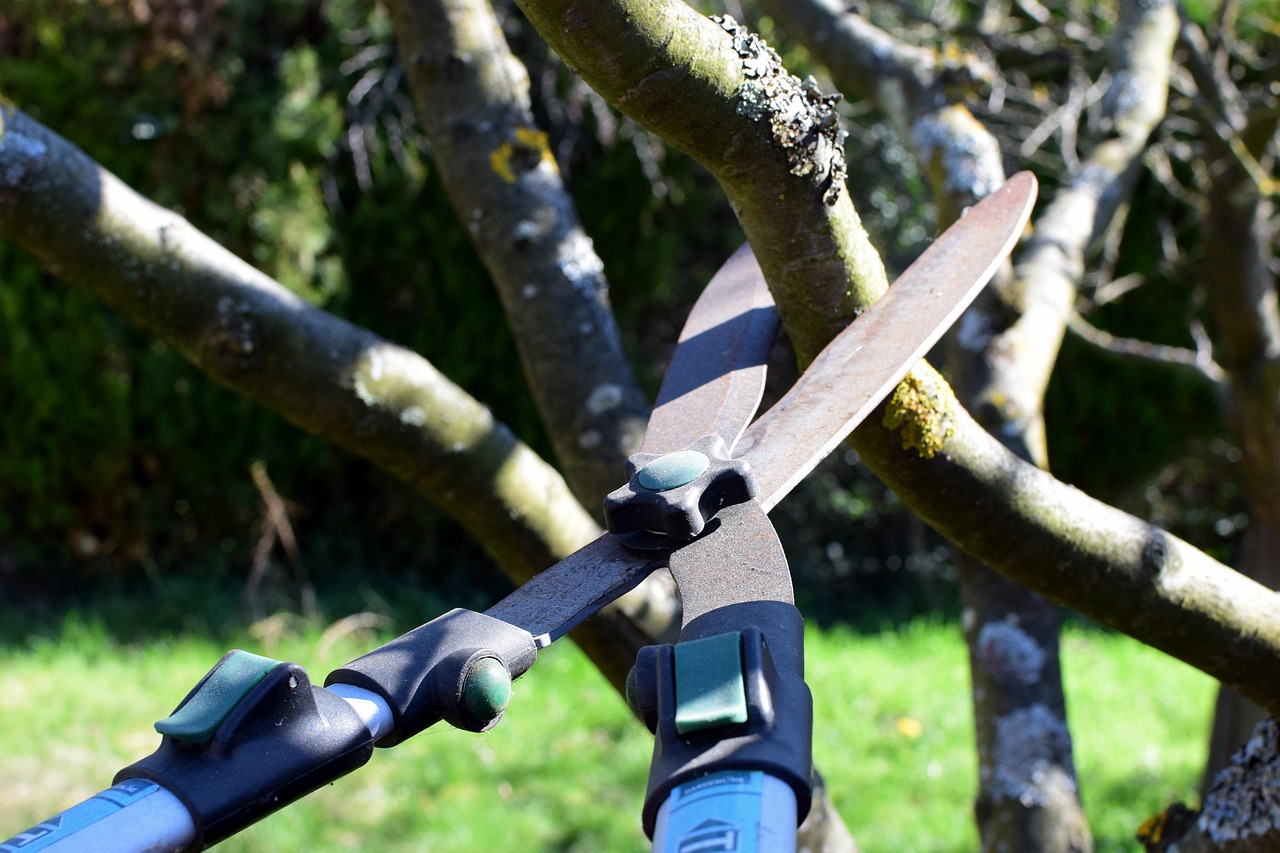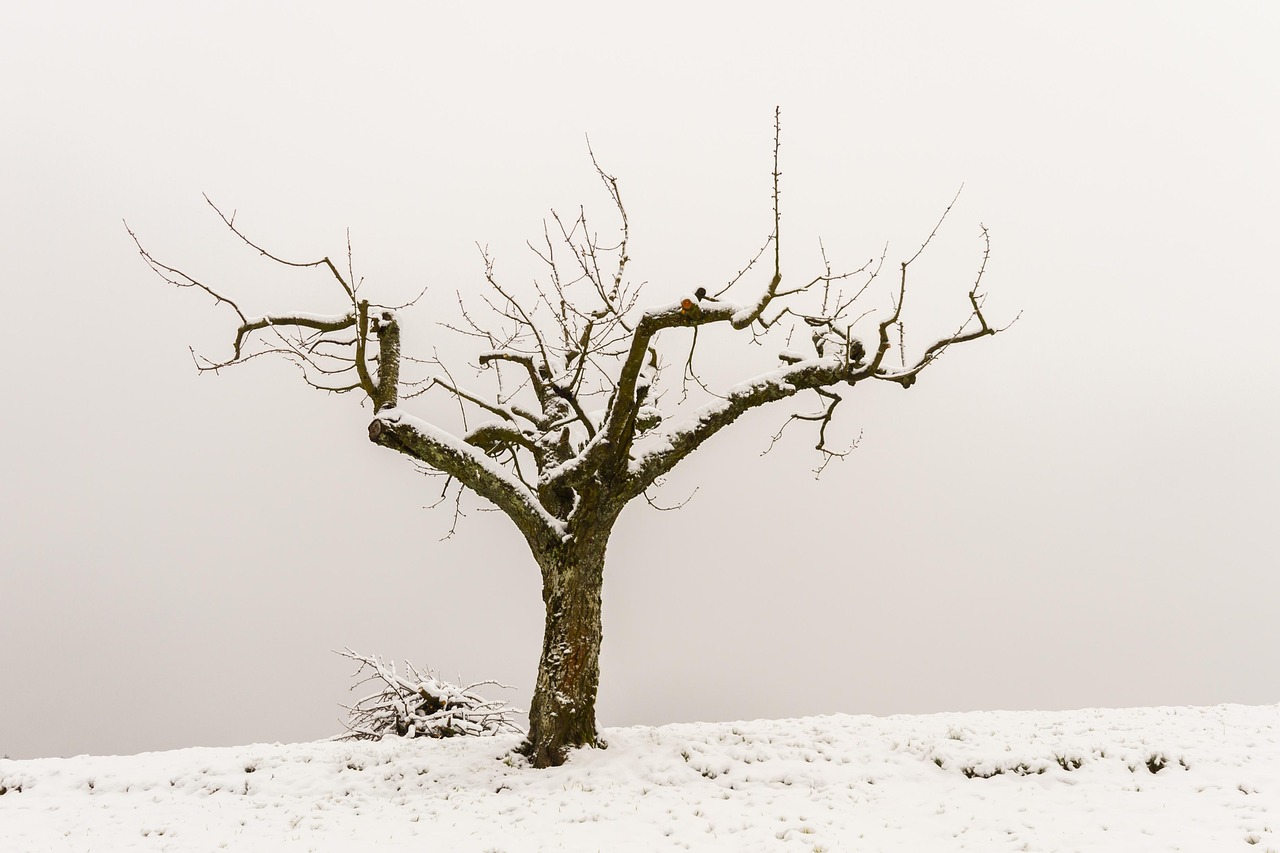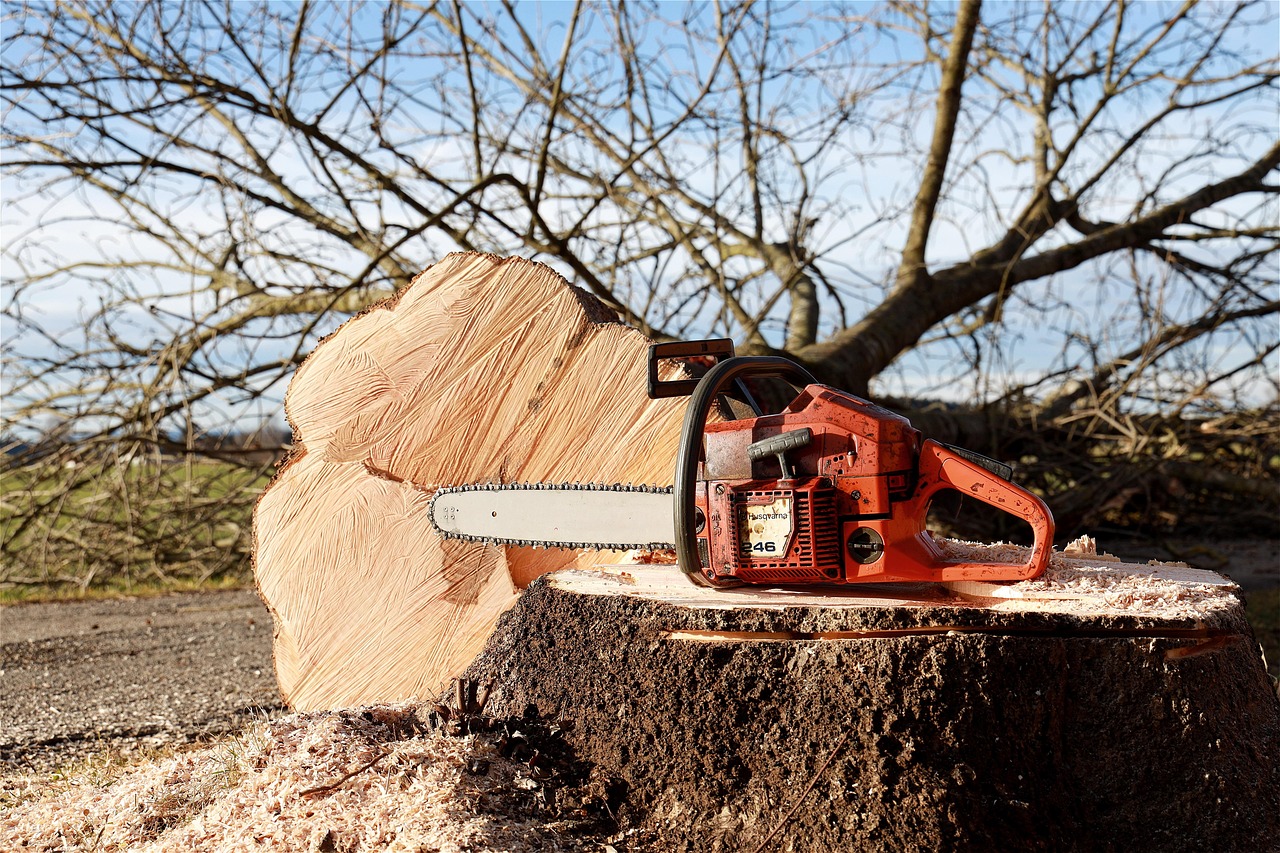Tree pruning in frost-prone areas requires careful timing and technique to protect trees from damage. Proper pruning promotes healthy growth and reduces the risk of disease, while also preparing trees to withstand harsh winter conditions.
Understanding Tree Pruning
Tree pruning is an essential horticultural practice that involves the selective removal of specific parts of a tree, such as branches, buds, or roots. This process is beneficial for various reasons, including improving tree health, enhancing fruit production, and shaping the overall appearance of the tree. However, in frost-prone areas, the timing and method of pruning become critical to ensure that trees can survive the winter months.

Frost-prone regions experience cold temperatures that can damage young buds and tender branches. When trees are pruned incorrectly or at the wrong time, they may be more susceptible to frost damage. Understanding how to prune effectively in these climates is crucial for maintaining tree vitality.
Key Benefits of Pruning Trees
Pruning offers several significant benefits for trees, especially in environments with harsh winters. Below are some key advantages:
- Improved Air Circulation: Pruning opens up the canopy, allowing better airflow. This helps reduce moisture buildup, which can lead to fungal diseases.
- Enhanced Light Penetration: Removing excess branches allows more sunlight to reach the inner parts of the tree, encouraging healthier growth.
- Increased Fruit Production: Proper pruning can stimulate fruit-bearing branches, leading to a more abundant harvest.
- Structural Integrity: By removing weak or crossing branches, pruning strengthens the tree’s structure and reduces the risk of breakage during winter storms.
Best Practices for Pruning in Frost-Prone Areas
To ensure successful pruning in frost-prone areas, follow these best practices:

| Practice | Description |
|---|---|
| Timing | Prune during late winter or early spring before new growth begins. This timing minimizes exposure of fresh cuts to frost. |
| Tools | Use sharp and clean tools to make precise cuts, reducing the risk of disease transmission. |
| Cutting Technique | Avoid leaving large stubs. Make cuts close to the branch collar to promote healing. |
| Remove Dead Wood | Regularly check for and remove any dead or diseased branches to prevent further issues. |
| Avoid Over-Pruning | Do not remove more than 25% of a tree’s canopy in a single season, as this can stress the tree. |
In addition to these practices, it is essential to consider the type of tree being pruned. Different species may have varying requirements for pruning. For example, fruit trees often require different techniques compared to ornamental trees. Knowing the specific needs of your trees can significantly impact their health and resilience against frost.
Signs a Tree Needs Pruning
Identifying when a tree needs pruning can help maintain its health and prevent future problems. Look for the following signs:
- Dead or dying branches that are discolored or brittle.
- Crossing branches that may rub against each other.
- Overgrown areas that block sunlight or air circulation.
- Weak or unstable branches that could pose a risk during storms.
By being proactive about pruning, you can keep your trees healthy and better prepared for the challenges of frost-prone areas.

Common Mistakes in Tree Pruning
Even seasoned gardeners can make mistakes when pruning trees. Here are some common errors to avoid:
- Pruning at the wrong time, exposing cuts to frost damage.
- Using dull or dirty tools, which can lead to jagged cuts and increase disease risk.
- Failing to assess the tree’s health before pruning, which may lead to unnecessary stress.
- Neglecting safety precautions when working on tall trees.
Avoiding these mistakes will help ensure that your pruning efforts are effective and beneficial for your trees. As you become more familiar with proper techniques and timing, you will enhance your ability to care for your trees in frost-prone environments.
Tools for Effective Tree Pruning
Having the right tools is essential for successful tree pruning. The quality and type of tools you use can significantly impact the health of the tree and the efficiency of the pruning process. Here are some commonly used tools and their purposes:

| Tool | Purpose |
|---|---|
| Pruning Shears | Ideal for cutting small branches up to ¾ inch in diameter. They provide clean cuts that promote healing. |
| Loppers | Used for branches that are too thick for pruning shears, typically up to 2 inches in diameter. They have long handles for better leverage. |
| Saws | Hand or powered saws are necessary for larger branches. They can handle branches over 2 inches in diameter. |
| Pole Pruners | Extendable tools that allow you to reach high branches without a ladder. These can be equipped with either shears or saw blades. |
| Safety Gear | Includes gloves, goggles, and hard hats to protect yourself while pruning. |
Before starting the pruning process, ensure that all tools are sharp and clean. This helps prevent damage to the tree and reduces the risk of spreading diseases.
Understanding Tree Growth Patterns
To prune effectively, it is essential to understand how trees grow. Different species exhibit various growth patterns, which can influence when and how they should be pruned. Here are some general growth types:
- Deciduous Trees: These trees lose their leaves in winter. Pruning during dormancy in late winter or early spring is typically recommended.
- Evergreen Trees: These trees retain their leaves year-round. Light pruning can be done in late winter, while heavier pruning should be reserved for early spring.
- Fruit Trees: Timing varies depending on the species. Most fruit trees benefit from pruning in late winter to encourage healthy fruit production.
Recognizing these growth patterns will help you determine the best approach to pruning each tree species in your garden or landscape.
Seasonal Considerations for Pruning
The season plays a crucial role in determining the right time to prune trees. Here are considerations for each season:
Winter Pruning
Winter is often considered the best time for major pruning tasks. During this period, trees are dormant, which means:
- The risk of disease transmission is lower.
- Tree structure is more visible without leaves, making it easier to identify branches that need removal.
- Fresh cuts have time to heal before new growth begins in spring.
Spring Pruning
Spring pruning should focus on minor tasks such as:
- Removing dead or damaged branches.
- Shaping the tree as new growth begins.
Avoid heavy pruning in spring as it can stress the tree and expose it to frost damage if new growth is cut back too early.
Summer Pruning
Summer pruning is generally lighter and may include:
- Removing suckers and water sprouts to maintain shape.
- Trimming back excessively long branches to encourage bushier growth.
This is a good time to assess the tree’s health and adjust your pruning strategy accordingly.
Fall Pruning
Fall is not typically recommended for heavy pruning due to the risk of exposing cuts to frost damage. However, light maintenance can be done:
- Removing any diseased branches to prevent issues over winter.
- Preparing trees for winter by ensuring they are well-structured and healthy.
The Importance of Proper Technique
The technique used when pruning can significantly affect tree health. Here are some essential techniques to keep in mind:
- Angle Cuts: Make cuts at a 45-degree angle to ensure proper water runoff and prevent rot.
- Cutting Back: When reducing the length of a branch, cut just above a healthy bud facing outward to encourage growth away from the center of the tree.
- Avoid Topping: Topping a tree can result in weak growth and increased risk of disease. Always prune selectively rather than removing large sections at once.
By mastering these techniques, you can ensure that your trees remain healthy and resilient against frost and other environmental challenges.
Dealing with Frost Damage
Even with the best pruning practices, frost damage can still occur. Understanding how to identify and manage frost damage is crucial for maintaining tree health in cold climates. Below are common signs of frost damage and steps you can take to mitigate its effects.
Identifying Frost Damage
Frost damage can manifest in various ways, including:
- Brittle Branches: Branches may become brittle and break easily when exposed to cold temperatures.
- Discoloration: Leaves or buds may turn brown or black, indicating damage caused by freezing temperatures.
- Delayed Growth: Trees may exhibit slower growth in the spring, as damaged buds fail to produce new leaves.
- Dieback: Tips of branches may die back, especially on young trees that are more vulnerable to cold.
Identifying these signs early can help you take appropriate action to revive affected trees.
Steps to Mitigate Frost Damage
If you suspect that your trees have suffered from frost damage, consider the following steps:
- Assess the Damage: Carefully inspect the tree to determine the extent of the damage. Look for dead branches, affected buds, and any visible signs of stress.
- Prune Affected Areas: Remove dead or damaged branches to prevent further stress on the tree. Make cuts just above healthy tissue to encourage new growth.
- Provide Protection: Use mulch around the base of the tree to retain moisture and regulate soil temperature. Additionally, consider wrapping young trees in burlap during extreme cold snaps.
- Water Appropriately: Ensure that trees receive adequate water, especially during dry spells. Healthy trees are better able to withstand stress and recover from damage.
- Fertilize Wisely: After assessing damage, consider applying a balanced fertilizer in early spring to support new growth. However, avoid over-fertilizing, as this can stress the tree further.
Special Considerations for Young Trees
Younger trees are particularly susceptible to frost damage due to their smaller size and less established root systems. Here are specific strategies for caring for young trees in frost-prone areas:
- Site Selection: When planting young trees, choose locations that offer some protection from harsh winds and late frosts. Areas near buildings or larger trees can provide microclimates that are warmer.
- Proper Planting Depth: Ensure that young trees are planted at the correct depth. Planting too deep can lead to root problems, while planting too shallow exposes roots to frost.
- Monitor Water Needs: Young trees require consistent moisture. Water them thoroughly during dry periods to promote healthy root development.
- Use Tree Guards: Consider using tree guards to protect the bark from frost and animal damage. These can also help insulate against cold temperatures.
The Role of Mulching in Frost Protection
Mulching is an effective technique for protecting trees from frost damage. It serves multiple purposes that contribute to tree health:
- Insulation: Mulch acts as an insulator, helping to maintain consistent soil temperatures during freezing conditions.
- Moisture Retention: It helps retain soil moisture, reducing stress on trees during dry periods.
- Disease Prevention: A layer of mulch can help reduce weed competition and lower the risk of soil-borne diseases.
To apply mulch effectively, use organic materials like wood chips or bark. Apply a layer 2-4 inches thick around the base of the tree, but keep it away from the trunk to prevent rot.
Pest Management During Winter
Pests can be a concern for trees in frost-prone areas, especially as temperatures fluctuate. Some pests may remain active during warmer winter days. Here are strategies for managing pests effectively:
- Regular Inspections: Conduct periodic checks for signs of pest activity, such as holes in bark or unusual leaf drop.
- Encourage Beneficial Insects: Promote a healthy ecosystem by encouraging beneficial insects that prey on harmful pests.
- Apply Dormant Oil: In late winter or early spring, consider applying dormant oil sprays to suffocate overwintering pests before they emerge.
- Avoid Chemical Treatments: Limit chemical pesticide use during winter months, as beneficial insects may also be affected. Use targeted treatments only when necessary.
A proactive approach to pest management will help protect your trees and ensure their vitality throughout the winter season.
Additional Considerations for Tree Care in Frost-Prone Areas
Beyond pruning and pest management, there are several other factors to consider when caring for trees in climates prone to frost. These elements can greatly influence tree health and resilience during harsh winter conditions.
Soil Health and Nutrition
Healthy soil is the foundation for strong tree growth. The condition of the soil affects nutrient availability, water retention, and overall tree vigor. Here are some ways to ensure optimal soil health:
- Soil Testing: Conduct soil tests to determine pH levels and nutrient composition. This information can guide fertilization strategies.
- Organic Matter: Incorporate organic matter, such as compost, into the soil to improve its structure and nutrient content.
- Mulching: As previously mentioned, mulch not only protects trees from frost but also enriches the soil as it decomposes.
Irrigation Practices
Proper irrigation is crucial, especially in fall and winter, when trees may become stressed due to dry conditions. Implement these practices to support tree health:
- Deep Watering: Water trees deeply during dry spells to encourage deep root growth, making them more resilient against cold temperatures.
- Avoid Overwatering: Ensure that drainage is adequate to prevent root rot, particularly during periods of thawing and freezing.
Choosing the Right Tree Species
When planting trees in frost-prone areas, selecting species that are well-suited to local conditions is vital. Consider the following:
- Hardiness Zones: Choose trees that are appropriate for your USDA hardiness zone. These species are more likely to withstand local winters.
- Disease Resistance: Opt for varieties known for their resistance to common pests and diseases in your region.
Community Resources and Education
Engaging with local gardening clubs, extension services, or arboretums can provide valuable resources and knowledge on tree care specific to your area. These organizations often offer workshops, demonstrations, and advice tailored to local conditions.
Additionally, utilizing online resources can enhance your understanding of tree care practices. Many universities and botanical gardens provide extensive literature on pruning techniques, pest management, and species selection.
Final Thoughts
Caring for trees in frost-prone areas requires a comprehensive approach that includes proper pruning techniques, pest management strategies, soil health considerations, and careful selection of tree species. By being proactive and informed, you can ensure that your trees thrive even in challenging climates.
As you implement these practices, remember that each tree is unique. Observing how your trees respond to care will help you refine your strategies over time. With dedication and knowledge, you can cultivate a healthy landscape that withstands the rigors of winter while providing beauty and benefits throughout the year.
Ultimately, investing time in understanding the nuances of tree care will not only enhance the aesthetic value of your property but also contribute to the ecological health of your community. Healthy trees play a vital role in improving air quality, providing shade, and supporting local wildlife. By fostering their growth, you are making an invaluable contribution to the environment.
As you continue your journey in tree care, stay curious and open to learning. Each season presents new opportunities to observe, adapt, and nurture your trees. Your efforts will pay off in a thriving landscape that endures the test of time.
